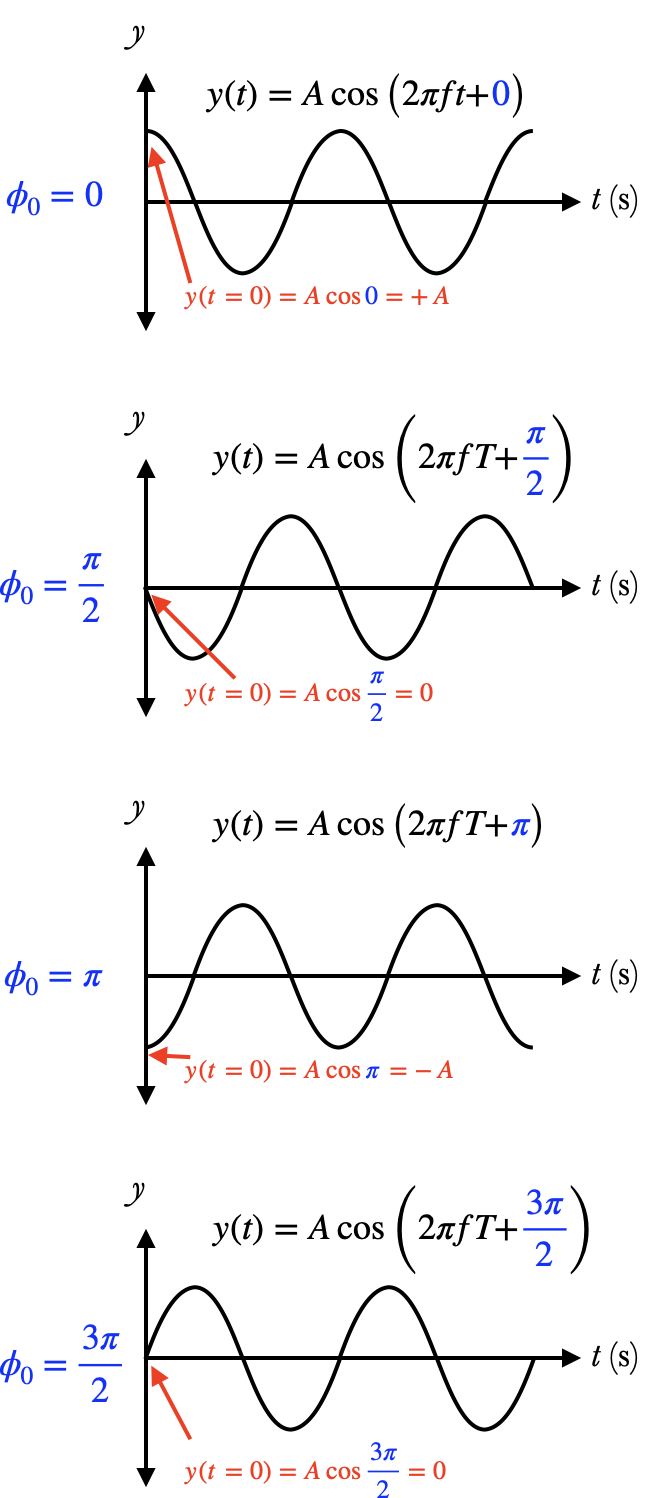5.
Initial Phase
The initial phase $\phi_0$ of an oscillation can be read from its history graph depending on what its displacement $y(t)$ is doing at $t=0$:
- If the displacement is at its maximum at $t=0$, then $\phi_0=0$
- If the displacement is at equilibrium and moving in the negative direction, then $\phi_0={\pi\over 2}\approx 1.57$
- If the displacement is at its minimum, then $\phi_0=\pi\approx 3.14$
- If the displacement is at equilibrium and moving in the positive direction, then $\phi_0={3\pi\over2}\approx 4.71$